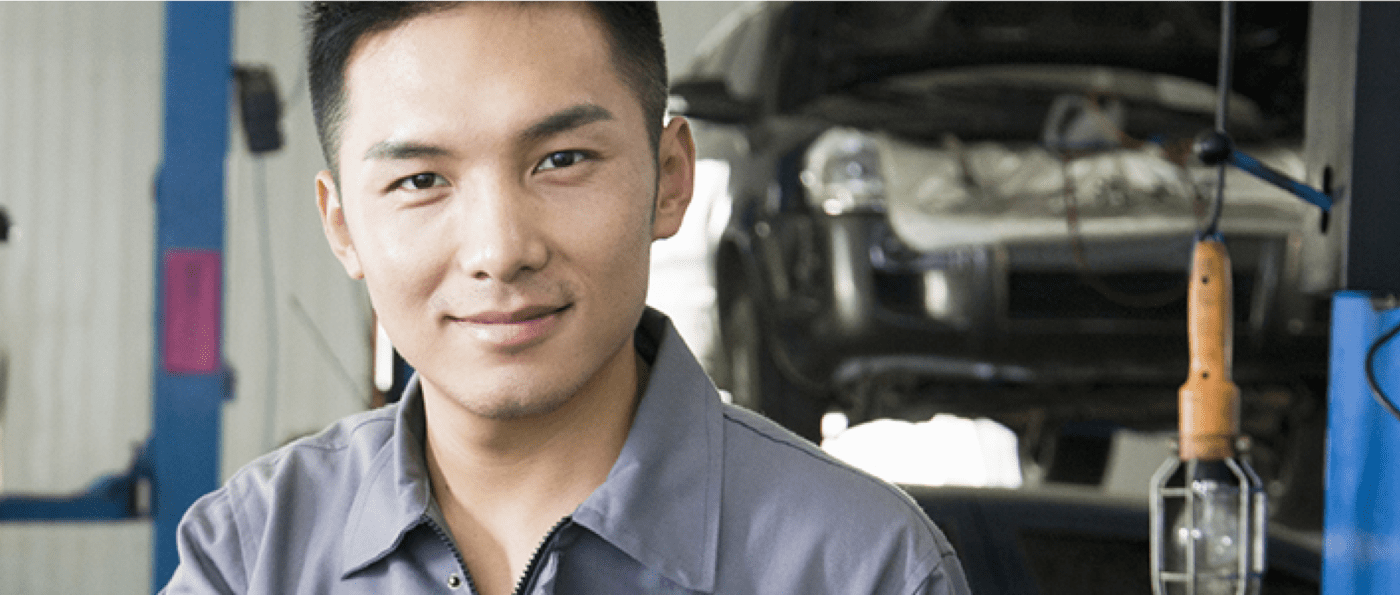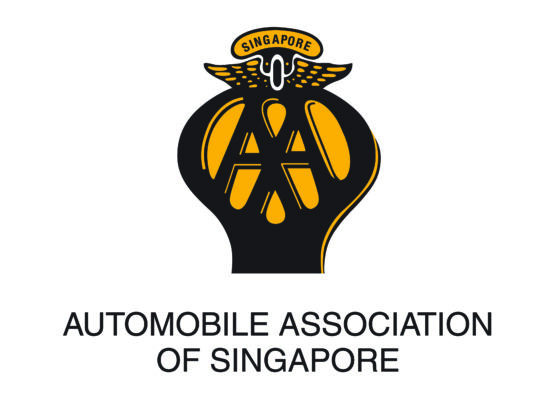AA and Traffic Police launched the Belt-Up Campaign to advocate the importance of rear seat belts and child restraints on 7 May 2002. The following is useful and essential information that motorists, passengers and parents should take note of.
AA-TRAFFIC POLICE BELT UP CAMPAIGN
More often than not, fatal road accidents can be avoided through the constant observation of road safety. We are not referring to just using designated pedestrian crossings or careful car control but also the use of safety features within a moving vehicle such as seat belts and child restraints.
Imagine the effect of a person hitting the ground after falling from the third storey. An unfastened passenger in a car travelling at just 50 km/h crashing into a barrier suffers a similar impact. If the chance of an adult surviving such a crash without serious injury is slim, what more a child’s?
Young children should be suitably restrained when travelling in a vehicle. A child held by a belted adult is just as unprotected. In a collision at 50 km/h, an infant unsecured by restraints would be ripped from an adult’s arms by a force 30 times greater than the baby’s bodyweight and be violently propelled forward against the dashboard or through the windscreen. It would be impossible for an adult to hang on to the child. If the adult is not belted up, he could crush the child as both would be flung against the dashboard. A properly fitted child restraint system can reduce fatal injuries by up to 75 per cent and serious injuries by 67 per cent.
In a car crash, two collisions take place. When a car hits an obstacle or is hit, it crumples, bends and then stops. When the car stops, its passengers continue to move within the car at the speed which it was originally travelling until something stops them, resulting in a human collision.
In a collision, passengers can collide not only with parts of the car but with each other – if they are unsecured by seat belts or some other suitable restraint. In a frontal crash, front seat passengers can suffer serious neck and spinal injuries when they strike directly or through the seat by rear seat occupants. If a child is within, he could suffer even fatal injuries inflicted by an unbelted adult who inevitably becomes a human projectile in the crash.
According to a study conducted at the University of Tokyo, drivers and front-seat passengers are at a five times greater risk of dying in a car accident if the rear-seat passengers are unbelted. In head-on collisions, the risks are far higher. With an unbelted person behind, the front passenger stands the chance of getting crushed both ways. This contradicts the common belief that the back seat is safer.
Do not take a safe journey for granted. Accidents can happen anytime, even on the shortest trips. Regrets cannot bring back lives or restore loved ones from irreversible injuries. Don’t take chances. Keep your loved ones safe.
THE LAW
As part of ongoing efforts to enhance the road safety of road users, the Traffic Police will be introducing changes to the Wearing of Seat Belt Rules from 1 January 2012, and the testing curriculum for learner Class 2B motorcyclists from 27 February 2012.
CHANGES TO WEARING OF SEAT BELT RULES
A series of changes to the Road Traffic (Motor Vehicles Wearing of Seat Belts) Rules will take effect from 1 January 2012 as described below.
Change in criterion to determine use of child restraints and booster seats
Currently, a child below the age of 8 is required to be properly secured with an appropriate child restraint or use a booster seat cushion to supplement the seat belt while travelling in a vehicle. Those above the age of 8 are required to put on seat belts.
From 1 January 2012, age will no longer be used as a criterion to determine if child restraints or booster seats are required. Anyone below the height of 1.35m will be required to be secured with a child restraint appropriate for a person of that height and weight, use a booster seat to supplement the seat belt or an adjustable seat belt. Those with a height of 1.35m and above, irrespective of their age, will be required to wear a seat belt. This change in criterion was made in consultation with the Ministry of Health and following a review of international standards and practices. This threshold height is found to be more suitable in deciding the proper fitting of seat belts and also consistent with current practices in countries such as the United Kingdom, Netherlands, Sweden, Finland, and Belgium.
To ensure that those affected by this change have sufficient time to obtain the required booster seats, child restraints and adjustable seatbelts, a grace period of one month will be given. For the month of January 2012, Traffic Police officers on patrol will offer advice to motorists instead of taking enforcement action when they come across those who are below 1.35m who fail to use a booster seat, child restraint or adjustable seatbelt.
Removal of exemption from child safety seat requirements for small school buses.
From 1 January 2012, all school children and passengers travelling on board small school buses1 shall be required to wear the appropriate child restraints2 or seat belts. This change is in line with corresponding changes made by the Land Transport Authority that require the mandatory installation of retractable three-point seat belts in small school buses by 31 December 20113.
Responsibility of bus conductor/attendant on board small school buses.
Drivers of small school buses as well as bus conductors or attendants on board small school buses will have to ensure that their passengers are properly secured with the appropriate child restraints or seat belts. If they fail to do so, bus conductors or attendants will be liable to a composition fine of $120/-, while the driver will be liable to a composition fine of $120/- and 3 demerit points. This change recognizes the important role of school bus conductors and attendants in ensuring the safety of school children on board and making sure that their seat belts are properly fastened.
Exemption of Child safety seat requirements for taxis.
Taxis will continue to be exempted from child safety seat requirements. This is because it would not be practical for taxis to carry a number or variety of child safety seats which are of different sizes.
However, research has shown that children face a greater risk of injury when travelling in the front seat. As such, a child or person below 1.35m should only ride in the rear seats to minimise the risk of injury in the event of an accident. Anyone below the height of 1.35m who rides in the front passenger seat of a taxi will be required to use his/her own child restraint or booster seat to supplement the seat belt. For failing to do so, the taxi driver will be liable to a composition fine of $120/- and 3 demerit points. The passenger will also be liable to a composition fine of $120/.
Engagement with stakeholders
The Traffic Police have engaged the relevant stakeholders such as the bus associations and taxi companies on the changes. These organisations support the changes in view of the positive impact it would have on overall road safety. Separately, letters have been sent to parents of school going children informing them of the changes to the revised rules. The support of parents are sought to remind their children on the importance of buckling up for their own safety no matter how short the journey is.
1 Small school buses refer to buses with seating capacity for 15 passengers or less (excluding the driver), with a maximum laden weight not exceeding 3,500kg and is used for the conveyance of any child to and from his school.
2 Those below the height of 1.35m will be required to wear a child restraint, use a booster seat or an adjustable seat belt, while those above the height of 1.35m will be required to wear a seat belt.
3 In October 2008, the Land Transport Authority (LTA) announced that all new small buses registered from 1 April 2009 must be installed with seat belts. Small buses carrying school children registered before 1 April 2009 must have forward-facing seats with three-point seat belts by 31 December 2011. All other existing small buses (other than school buses) must have forward-facing seats with three-point seat belts by 31 December 2013.
TESTING CURRICULUM FOR LEARNER CLASS 2B MOTORCYCLISTS
Motorcyclists and their pillion riders remain the most vulnerable group of road users, accounting for almost half of all road fatalities in 2010. Currently, Class 2B learner riders are only required to pass one theory test- the Riding Theory Test, which is a combination of both basic theory and riding theory in a single test. With effect from 27 February 2012, all learner riders will be required to pass two separate theory tests – Basic Theory Test and Riding Theory Test before they are allowed to take the practical riding test. The Basic Theory Test comprises 50 multiple choice questions (MCQs) and covers traffic signs, traffic rules and regulations. The Riding Theory Test will be revised to focus solely on motorcycle-related riding knowledge. A pass is obtained with 45 or more correct answers for each test.
The new two-tiered theory test structure thus allows for deeper and wider testing of the local traffic rules and motorcycle handling knowledge, before learner riders are allowed on the roads. The aim is to enhance riding competency and reduce incidence of errant behavior and accidents. This test structure will also be consistent with the requirements for Class 3 or 3A driving licences for cars that similarly feature a two-tiered theory test model.
With this change, Class 2B learner riders and Class 3/3A learner drivers will take a common Basic Theory Test. Those exempted from taking the Basic Theory Test will include holders of a valid Class 3, 3A, 4, 4A and 5 Singapore driving licence and those who already possess a pass record for their Basic Theory Test.
To minimise the impact on the current batch of learner motorcyclists, the change in the theory test structure will not affect those who sit for their Riding Theory Test before 27 February 2012. Following the change, the waiting time for the Class 2B two-tiered theory tests will be closely monitored. Current capacity can be increased to manage any additional demand for theory tests. The Traffic Police will endeavour to keep the waiting time for both tests manageable.
Commander of Traffic Police, Assistant Commissioner of Police Cheang Keng Keong said, “The new measures are part of a series of ongoing initiatives by the Traffic Police aimed at improving road safety. I thank the stakeholders involved for their invaluable feedback and would like to urge all parents to educate and remind their school-going children on the importance of wearing seat belts. We all play a part in making our roads safe for our loved ones and fellow road users.”
PUBLIC AFFAIRS DEPARTMENT
SINGAPORE POLICE FORCE
23 DECEMBER 2011 @ 3PM
CHILD RESTRAINT GUIDELINES & TIPS
Child restraints should ONLY be used in conjunction with seat belts.
| Age | Weight | Type of Restraint |
|---|---|---|
| Babies Up to 9 months |
Up to 10kg | Infant Capsule |
| Toddlers 9 months to 4 years |
9 – 18kg | Convertible Seat |
| Older Children 5 – 8 years |
19 – 36kg | Booster Seat |
Booster Seat
This seat raises a child’s height to a suitable level, enabling the child to use adult seat belts safely. When a child can safely use an adult seat belt without the booster seat, ensure that the belt goes across the child’s chest and not the face or the neck.
A child restraint should be secured by the car’s existing 3-point seat belt, preferably installed by the child seat dealer’s technician. If you want to install it yourself, the manufacturer’s installation instructions must be adhered to strictly.








